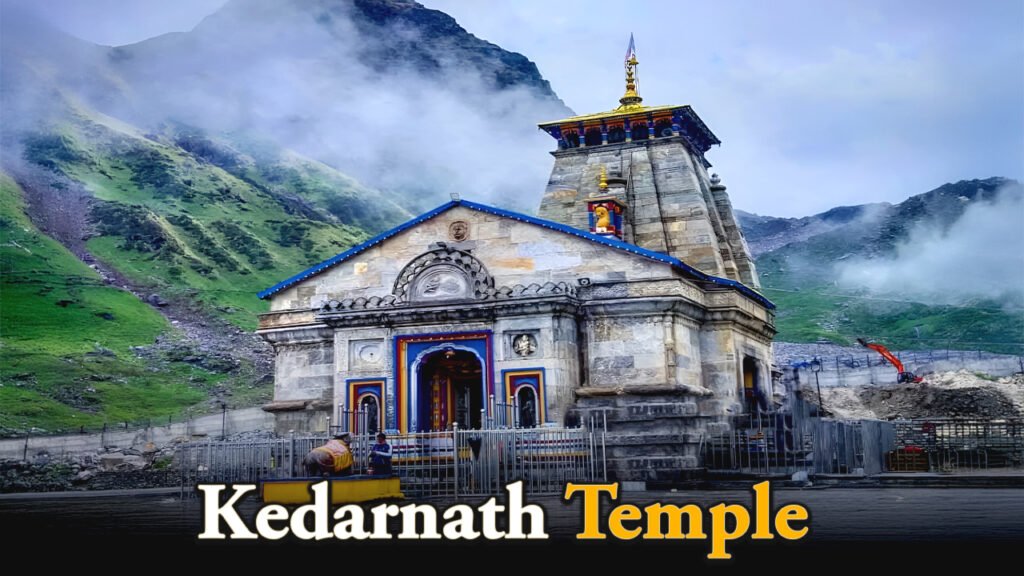Introduction to Kedarnath Temple
The Kedarnath Temple, nestled in the majestic Himalayas, is not just a place of worship but a living testament to India’s rich cultural heritage. This ancient shrine, dedicated to Lord Shiva, holds a special place in Hindu mythology and is intricately connected to the epic tale of Mahabharata. In this article, we’ll explore the fascinating links between Kedarnath Temple and the great Indian epic, uncovering the legends, spiritual significance, and historical evidence that bind them together.
The Legend of Kedarnath Temple
Before we delve into the Mahabharata connection, let’s briefly touch upon the legend of Kedarnath Temple. According to Hindu mythology, the temple was built by the Pandavas, the central characters of the Mahabharata, to seek Lord Shiva’s forgiveness for their actions during the great war. This sets the stage for our exploration of the deep-rooted connection between the temple and the epic.
Kedarnath in the Mahabharata
The Pandavas’ Journey
The Mahabharata narrates that after the great war, the Pandavas, burdened by the guilt of killing their own kin, embarked on a spiritual journey to seek redemption. Their path led them to the Himalayas, where they hoped to encounter Lord Shiva and beg for his forgiveness.
Bhima’s Encounter with Shiva
One of the most intriguing aspects of this connection is the tale of Bhima’s encounter with Lord Shiva. As the story goes, Shiva, to test the Pandavas’ devotion, disguised himself as a bull and evaded them. Bhima, the strongest of the brothers, attempted to catch the bull by its tail. This led to a divine revelation, with Shiva appearing before them in his true form.
Architectural Connections
Ancient Construction Techniques
The Kedarnath Temple’s architecture offers fascinating insights into its Mahabharata connection. Experts believe that the construction techniques used in the temple align with those described in ancient texts, including the Mahabharata. The massive stones used in the temple’s construction, some weighing over 20 tons, raise questions about the advanced engineering skills of that era.
Symbolic Representations
Throughout the temple, you’ll find symbolic representations that harken back to the Mahabharata. From intricate carvings depicting scenes from the epic to specific architectural elements that align with descriptions in the text, these details serve as a physical link between the temple and the ancient story.
Spiritual Significance
The Importance of Penance
The Pandavas’ journey to Kedarnath emphasizes the importance of penance and seeking forgiveness in Hindu philosophy. This theme resonates strongly with pilgrims who visit the temple today, many of whom come seeking spiritual cleansing and divine blessings.
Divine Blessings
Just as the Pandavas sought and received Lord Shiva’s blessings at Kedarnath, devotees today visit the temple with similar aspirations. The belief in the transformative power of Shiva’s blessings at this sacred site has remained constant through the ages, connecting modern-day pilgrims with the legendary heroes of the Mahabharata.
Geological Evidence
Rock Formations
Interestingly, some geologists have pointed out that certain rock formations around Kedarnath align with descriptions in the Mahabharata. While these observations are not conclusive proof, they add another layer of intrigue to the connection between the temple and the epic.
Natural Phenomena
The Mahabharata describes several natural phenomena occurring during the Pandavas’ journey, some of which are still observable in the Kedarnath region today. From specific weather patterns to unique geographical features, these correlations fuel discussions about the historical basis of the epic.
Historical Accounts
Ancient Texts
Beyond the Mahabharata itself, other ancient texts and scriptures mention the Pandavas’ journey to Kedarnath. These historical accounts, while varying in details, consistently link the temple to the epic, reinforcing the connection across different literary sources.
Oral Traditions
Local oral traditions in the Kedarnath region have kept the Mahabharata connection alive for generations. These stories, passed down through the ages, often provide unique insights and details not found in written accounts, adding richness to the overall narrative.
Modern-Day Pilgrimage
Retracing the Pandavas’ Steps
Many pilgrims today view their journey to Kedarnath as a way of retracing the Pandavas’ steps. This perspective adds a deeply personal and spiritual dimension to their pilgrimage, allowing them to connect with the epic on a profound level.
Spiritual Experiences
Numerous visitors to Kedarnath report powerful spiritual experiences, often drawing parallels to the transformative journey of the Pandavas. These personal accounts contribute to the living legacy of the Mahabharata-Kedarnath connection, keeping the ancient story relevant in modern times.
Read Also: Dreams and its astrological significance
Conclusion of Kedarnath Temple
The connection between Kedarnath Temple and the Mahabharata is a multifaceted tapestry woven from legend, history, spirituality, and personal experiences. While some aspects of this connection remain in the realm of mythology, others find support in archaeological and historical evidence. Regardless of one’s personal beliefs, the enduring link between Kedarnath and the Mahabharata continues to inspire and captivate people from all walks of life, serving as a bridge between India’s ancient past and its vibrant present.
For interesting astrology-related videos, subscribe to us on YouTube
FAQs
- Is there any archaeological evidence supporting the Mahabharata’s connection to Kedarnath?While direct archaeological evidence is limited, some architectural features and construction techniques align with descriptions in ancient texts, including the Mahabharata.
- Can visitors see any specific elements in the temple that reference the Mahabharata?Yes, the temple contains various carvings and symbolic representations that are believed to depict scenes or characters from the Mahabharata.
- How long does it take to complete the pilgrimage to Kedarnath?The duration can vary, but typically, the trek to Kedarnath takes 1-2 days, with many pilgrims spending an additional day at the temple before returning.
- Are there any other temples in the region connected to the Pandavas’ journey?Yes, the Panch Kedar temples, including Kedarnath, are all associated with the Pandavas’ quest for redemption after the Mahabharata war.
- How has the Kedarnath-Mahabharata connection influenced modern Hindu practices?This connection has reinforced the importance of pilgrimage and seeking divine forgiveness in Hindu practice, inspiring many to undertake spiritual journeys to sacred sites like Kedarnath.

